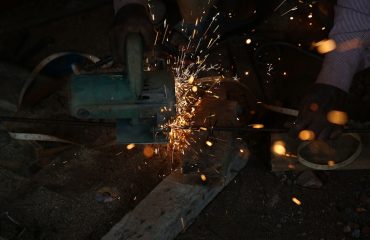body { font-family: sans-serif; line-height: 1.6; }
h1, h2, h3 { color: #333; }
img { max-width: 100%; height: auto; }
The construction industry is undergoing a significant transformation, driven by the need for faster, more efficient, and sustainable building practices. Modular steel system solutions are at the forefront of this revolution, offering a compelling alternative to traditional construction methods. This comprehensive guide explores the key aspects of modular steel systems, highlighting their advantages and potential for shaping the future of building design and construction.
Designing with Precision: The Principles of Modular Steel Systems
Modular steel systems are based on the concept of prefabrication. Steel components, including columns, beams, walls, and floors, are manufactured off-site in a controlled factory environment. These modules are then transported to the construction site and assembled, significantly reducing on-site construction time and labor costs. The precision of factory fabrication ensures accuracy and minimizes errors, leading to a higher-quality final product. Design flexibility is a key advantage; systems can be customized to meet specific project requirements, incorporating various finishes, insulation, and building services within the modules. This precision engineering extends to the connection details, often utilizing high-strength bolts or welds for robust and reliable assemblies. Detailed 3D modeling and Building Information Modeling (BIM) are crucial in the design phase, ensuring seamless integration of all components and facilitating efficient on-site assembly.
Diverse Applications: Where Modular Steel Systems Excel
The versatility of modular steel systems makes them suitable for a wide range of applications. From commercial buildings and industrial facilities to residential developments and even temporary structures, these systems offer a flexible and scalable solution. In commercial settings, they are ideal for offices, retail spaces, and warehouses, offering rapid deployment and customizable layouts. Industrial applications include factories, workshops, and storage facilities, where the strength and durability of steel are particularly advantageous. Residential projects benefit from the speed of construction and the potential for creating energy-efficient and sustainable homes. Furthermore, modular steel systems are increasingly used in temporary structures such as event spaces, pop-up shops, and emergency housing, offering rapid deployment and easy dismantling.
The Benefits Beyond Speed: Cost-Effectiveness and Sustainability
While speed of construction is a major advantage, modular steel systems offer numerous other benefits. The controlled factory environment leads to reduced material waste and improved quality control, resulting in significant cost savings compared to traditional methods. Prefabrication minimizes on-site disruption, reducing noise and inconvenience for surrounding areas. Moreover, the use of steel, a highly recyclable material, contributes to the sustainability of these systems. Steel’s inherent strength allows for lighter structures, minimizing the need for extensive foundations and reducing the overall environmental impact. Many modular steel systems also incorporate sustainable design features such as high-performance insulation and energy-efficient building services, further enhancing their environmental credentials.
Overcoming Challenges: Addressing Potential Limitations
Despite the numerous advantages, modular steel systems face some challenges. Transportation logistics can be complex, particularly for large modules, requiring careful planning and specialized transport. The initial investment in design and manufacturing can be higher than traditional construction, although this is often offset by long-term cost savings. Building codes and regulations may vary across different regions, requiring adaptations to the design and construction process. Finally, skilled labor is needed for both the off-site fabrication and on-site assembly, ensuring the project’s success. Addressing these challenges requires careful project planning, collaboration with experienced contractors, and adherence to strict quality control procedures.
The Future of Modular Steel: Innovation and Trends
The future of modular steel systems is bright, driven by ongoing innovation and technological advancements. The integration of advanced manufacturing techniques, such as 3D printing and robotic automation, is expected to further enhance efficiency and precision. The development of new steel alloys and composite materials will lead to lighter, stronger, and more sustainable structures. Smart building technologies, such as integrated sensors and automated systems, are being incorporated into modular steel designs, enhancing building performance and occupant comfort. As the industry continues to embrace digital technologies and sustainable practices, modular steel system solutions are poised to play an increasingly prominent role in shaping the built environment.
Tags: Modular Steel, Steel Structures, Modular Building, Prefabricated Steel, System Solutions




